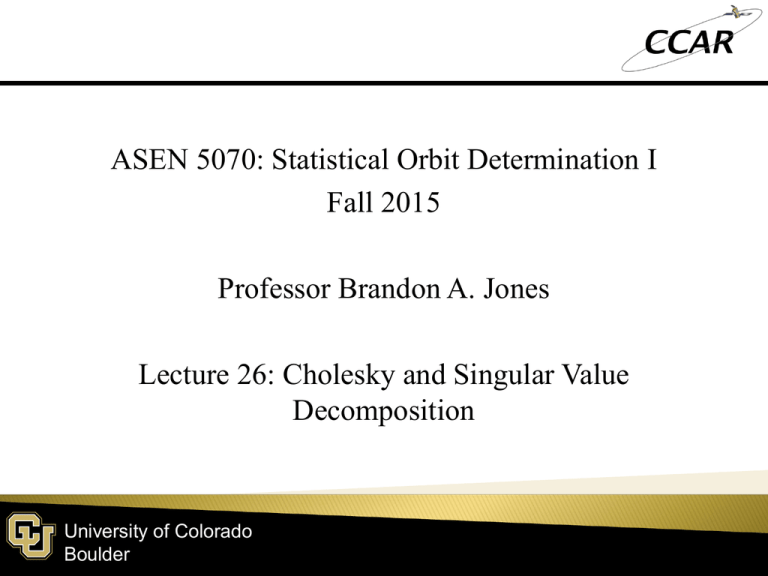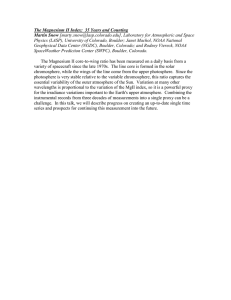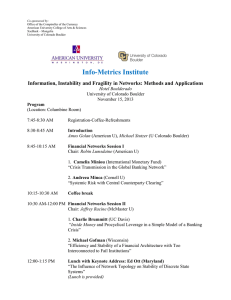ASEN 5070: Statistical Orbit Determination I Fall 2015 Professor Brandon A. Jones
advertisement

ASEN 5070: Statistical Orbit Determination I Fall 2015 Professor Brandon A. Jones Lecture 26: Cholesky and Singular Value Decomposition University of Colorado Boulder Homework due Friday Lecture quiz due Friday Exam 2 – Friday, November 6 University of Colorado Boulder 2 Cholesky-Based Least Squares University of Colorado Boulder 3 Recall the weighted least squares: Instead, we will write: M is the information matrix University of Colorado Boulder 4 Usually, we solve via matrix inversion If the number of estimated parameters is large, then this is expensive and possibly inaccurate ◦ Estimate gravity field of degree 360 ◦ n ≈ 129,600 University of Colorado Boulder 5 Instead, let’s write the equations in terms of the Cholesky decomposition R here is not the obs. error covariance matrix! University of Colorado Boulder 6 Eq. 5.2.7 in the Book University of Colorado Boulder 7 Eq. 5.2.8 in the Book University of Colorado Boulder 8 We may also solve for the covariance matrix using the Cholesky decomposition University of Colorado Boulder 9 Using this directly still requires an n×n matrix inversion! Eq. 5.2.9 provides a simple algorithm to get S by leveraging University of Colorado Boulder 10 Eq. 5.2.9: University of Colorado Boulder 11 SVD-Based Least Squares (not in book) University of Colorado Boulder 12 The SVD of any real m×n matrix H is University of Colorado Boulder 13 University of Colorado Boulder 14 It turns out that we can solve the linear system using the pseudoinverse given by the SVD University of Colorado Boulder 15 For the linear system the solution minimizes the least squares cost function University of Colorado Boulder 16 Recall that for the normal solution, This squares the condition number of H ! Instead, SVD operates on H, thereby improving solution accuracy University of Colorado Boulder 17 The covariance matrix P with R the identity matrix is: Home Practice Exercise: Derive the equation for P above University of Colorado Boulder 18 Solving the LS problem via SVD provides one of (if not the most) numerically stable solutions Also a square-root method (does not square the condition number of H ) Generating the SVD is more computationally intensive than most methods University of Colorado Boulder 19 Bias Estimation University of Colorado Boulder 20 As shown in the homework, i.e., biased observations, yields a biased estimator. To compensate, we can estimate the bias: University of Colorado Boulder 21 What are some example sources of bias in an observation? University of Colorado Boulder 22 GPS receiver solutions for Jason-2 Antenna is offset ~1.4 meters from COM What could be causing the bias change after 80 hours? University of Colorado Boulder 23


